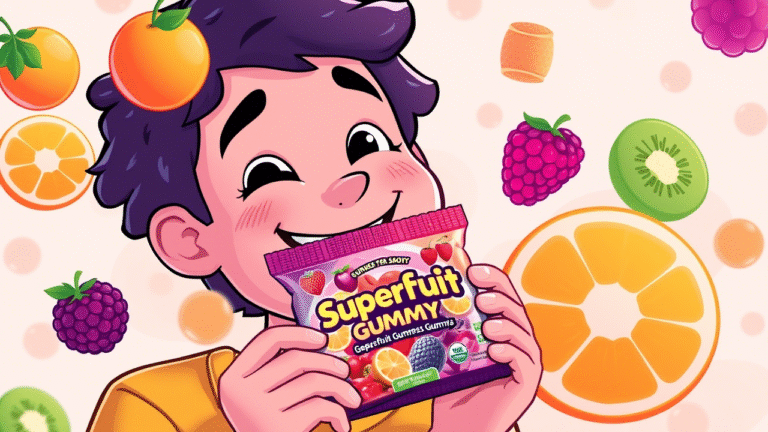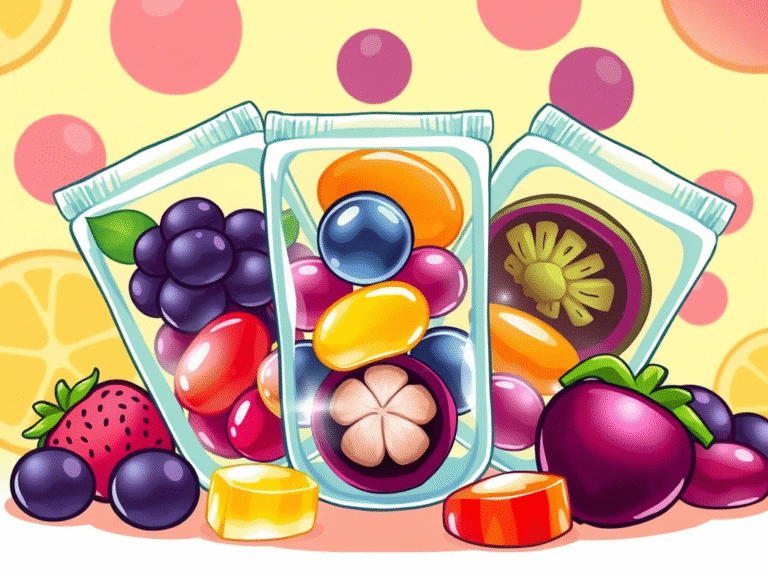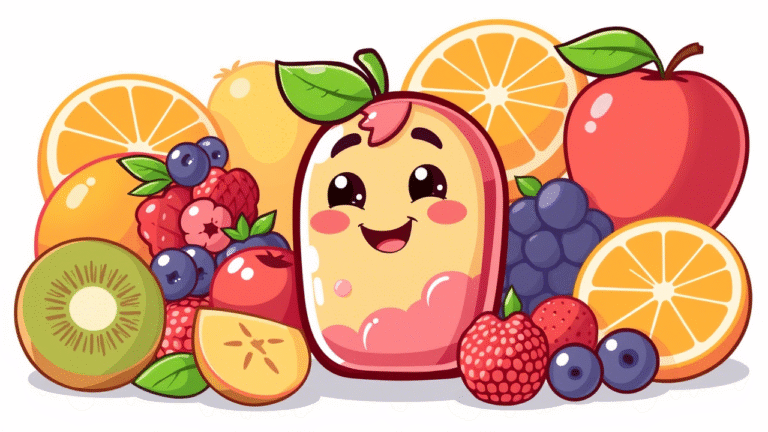What Makes Japanese Knotweed a Cool Ingredient in Gummies?
Japanese knotweed is a ‘cool’ ingredient in gummies as it’s rich in antioxidants such as resveratrol and has a tart, rhubarb-like flavor that will be hard to forget. It’s also an invasive plant, so eating it makes it a sustainability play.
But why should you care? Now, think about a gummy that would not only taste delicious, but also provide a health benefit and be good for the planet.
That is the power of Japanese knotweed. Let me take you through it, step by step.
What’s So Special About Japanese Knotweed?
Let’s start with the basics. Japanese knotweed is not your ordinary plant. It’s 1 of the richest sources of resveratrol (a superstar antioxidant). You’ve likely read about resveratrol — it’s the stuff also found in red wine and grapes.
Resveratrol is not bullshit, it turns out. It’s associated with heart benefits, anti-inflammatory effects and anti-aging properties. And guess what? There’s more of it in Japanese knotweed than in most other plants. That’s what makes it such a big deal.
But wait, there’s more. It’s nutrient-dense, to boot. Vitamin A for your skin, vitamin C for your immune system, and potassium for your heart. Aside: It’s also extremely low in calories! Sounds like a win-win, right?
The Health Benefits
All right, now let’s get to the good stuff — what Japanese knotweed can actually do for your body.
First up, antioxidants. These tiny warriors battle oxidative stress and inflammation, both associated with aging and chronic disease.
Not only does Japanese knotweed contain resveratrol, but it is one of the highest sources of antioxidants, with flavonoids, polyphenols and carotenoids.
Collectively, that creates a highly protective shield around your cells.
Then there is support for the cardiovascular system. It appears that resveratrol can lower cholesterol, diminish the viscosity of blood, and increase the efficacy of other blood thinners, thus reducing the risk of blood clots. That’s better heart health. And who doesn’t want that?
If you are inclined toward fitness, there is another advantage. Resveratrol could increase metabolism and balance estrogen. This could also promote weight control and muscle growth. Pretty cool, huh?
And get this — Japanese knotweed is antimicrobial, too. Compounds such as epicatechin and quercetin are able to suppress the growth of specific types of bacteria. So, it’s not just good for you; it’s hard on germs.
A Little History
Now, let’s rewind a bit. Japanese knotweed isn’t new. In reality, Traditional Chinese Medicine has been using it for centuries.
In those days, it was used to “clear heat and toxicity” from the body. They thought of it as enhancing blood quality and upholding longevity. There is some science behind some of these claims, particularly regarding antioxidants and anti-inflammatory effects.
So in as much as Japanese knotweed might fancy trendy now, it’s got a deep history (pun intended).
Turning a Problem into a Solution
Here’s the thing about Japanese knotweed, it’s not all flowers and rainbows. It is considered to be an invasive species in many places. It grows quickly, spreads voraciously and can wreak havoc on ecosystems.
But now consider the following. Rather than view it as a problem, some companies are flipping the script. They’re incorporating Japanese knotweed into foodstuffs — such as gummies. This thing is good for sustainability and the circular economy.
Think about it. By transforming an invasive and unwelcome plant into a useful resource, we’re solving two problems at once! We’re lessening the environmental load even as we make a useful product. That’s actually quite clever if you think about it.
The Flavor Factor
Now, let’s talk taste. Japanese knotweed tastes tart and very rhubarb-like, which makes it an ideal subject for sweet purposes like gummies.
Think of biting into a gummy that’s tangy, but not overbearing. It’s refreshing and unique — and has just absolutely nothing to do with your typical fruity flavors. That is what Japanese knotweed brings to the table.
In Japan, the tender shoots are even prized as a spring delicacy. People cook them as vegetables or desserts. So, it’s not just a healthful ingredient; it’s a culinary star as well.
Market Trends
Let’s be honest — people are obsessed with functional foods. These are not merely snacks that fill you up. The health benefits are genuine.
Chewy supplements packed with nutrients are a major trend now. Consumers are after antioxidants, immune support and heart health — all in one bite. Japanese knotweed is the very poster child of this category.
And the demand for sustainable ingredients is increasing. Brands employing invasive species, such as Japanese knotweed, are capitalizing on this eco-conscious mindset. And their customers win and the planet wins.
Risks and Considerations
Before you rush out and stock up on Japanese knotweed gummies, though, a few cautions are in order.
First, the sour taste is attributed to oxalic acid. It’s not a problem for most people. But there can be risks to consuming excessive oxalic acid if you have kidney problems or gout .
Second, resveratrol can interact with some medications, especially blood thinners. As usual, if you are taking any medication, it is a good idea to consult your physician before trying anything new.
These are not deal-breakers, but they are things to take into account.
Nutrition
Let’s examine the specific nutritive qualities of Japanese knotweed more closely. Here’s a chart to explain:
Nutritional Table: Japanese Knotweed (per 100g dry weight)
| Nutrient/Compound | Amount | Notable Benefit |
| Vitamin A | High | Organ, skin, and immune health |
| Vitamin C | High | Immunity, anti-inflammatory |
| Carotenoids | 378 mg | Antioxidant, skin/eye health |
| Potassium | Significant | Heart, muscle, nerve function |
| Resveratrol | Rich source | Heart health, anti-aging, metabolism |
| Manganese | Present | Bone health, metabolism |
| Zinc | Present | Immunity, healing |
| Polyphenols | High | Antioxidant |
So as you can see, Japanese knotweed is a beast. It contains just about every vitamin, mineral and antioxidant you can think of. No wonder it’s catching on.
Summary: Why Japanese Knotweed is Awesome in Gummies
So, let’s review why Japanese knotweed is such a neat ingredient. Here’s a quick summary:
| Feature | Details/Stats |
| Resveratrol content | Among the highest in edible plants |
| Antioxidant activity | High; includes flavonoids, carotenoids, polyphenols |
| Vitamins/minerals | A, C, potassium, manganese, zinc |
| Health benefits | Cardiovascular, anti-inflammatory, metabolic, antimicrobial |
| Culinary appeal | Tart, rhubarb-like flavor; springtime delicacy in Japan |
| Sustainability | Utilizes invasive species, supports circular economy |
| Market trend | Functional, health-boosting gummies in demand |
This table sums it up nicely. The weed You can eat Japanese knotweed is tasty, healthy, and green. It’s the total package.
Final Thoughts
Japanese knotweed is a cool gummy ingredient because it’s healthful, sustainable and delicious. Who knew an invasive plant could be amazing like this?
The next time you come across a gummy made with Japanese knotweed, try it. You could find your next favorite snack.

I’m Kai, a fitness fiend and wellness geek from Vancouver. I love helping people find small, sustainable ways to feel better every day. From workouts, to good mental health, to smoothie recipes, I keep it real. Perfection is not my thing — progress is. When I’m not at the gym, I’m likely to be hiking or sampling a new meditation app







